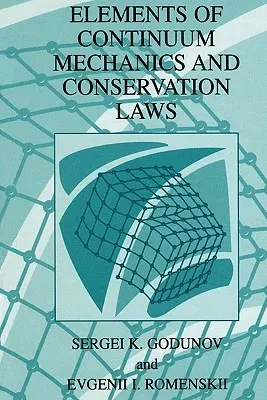Elements of Continuum Mechanics and Conservation Laws presents a
systematization of different models in mathematical physics, a study of
the structure of conservation laws, thermodynamical identities, and
connection with criteria for well-posedness of the corresponding
mathematical problems.
The theory presented in this book stems from research carried out by the
authors concerning the formulations of differential equations describing
explosive deformations of metals. In such processes, elasticity
equations are used in some zones, whereas hydrodynamics equations are
stated in other zones. Plastic deformations appear in transition zones,
which leads to residual stresses. The suggested model contains some
relaxation terms which simulate these plastic deformations. Certain laws
of thermodynamics are used in order to describe and study differential
equations simulating the physical processes. This leads to the special
formulation of differential equations using generalized thermodynamical
potentials. The structure of conservation laws and new ideas and methods
of constructing mathematical models are presented.
The final chapter: Structure of Thermodynamically Compatible Systems
reflects Godunov's latest research. It presents an approach to the
formalization of equations of continuum mechanics, in particular,
relationships between the structure of thermodynamical conservation laws
and representations of the rotation group. The material covered in this
chapter was written during the preparation of the English edition and
intensively discussed with specialists in different countries and
presented at lectures given by Godunov in 2002.
This book describes the theory developed by Godunov together with his
former student Evgenii Romenskii which presents a systematization of
different models of elastic media and related classification of
hyperbolic equations.


